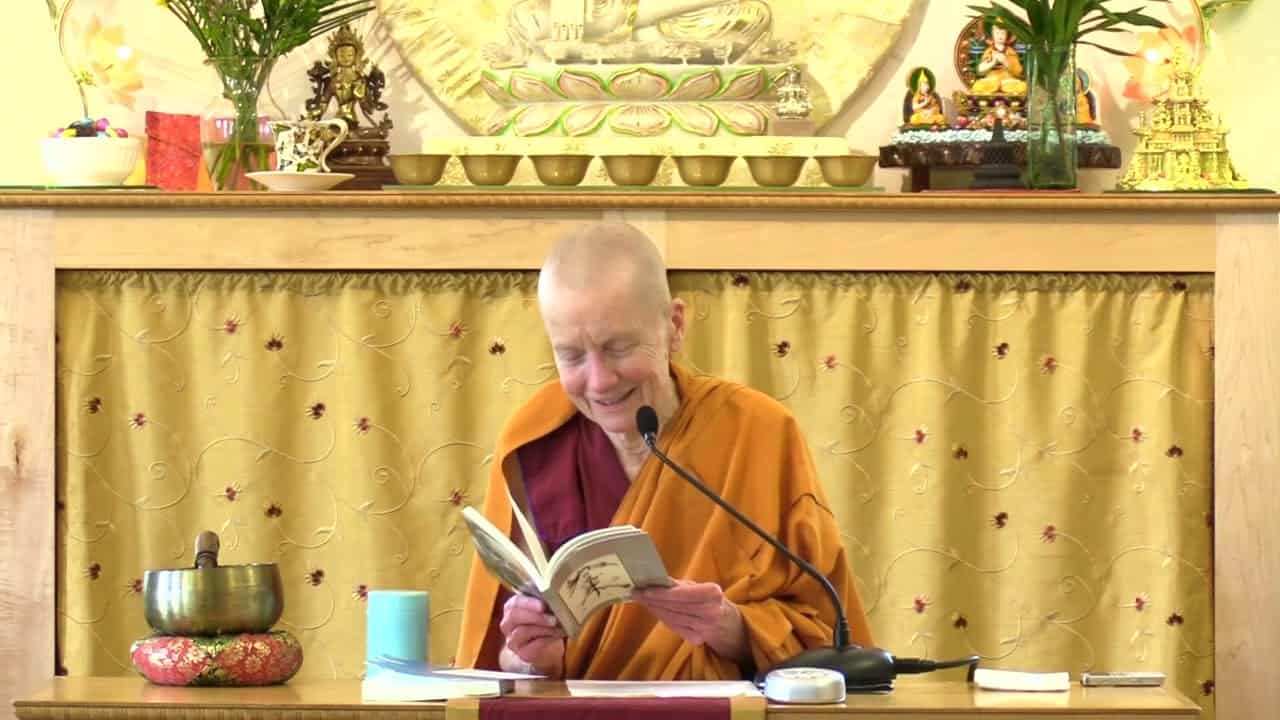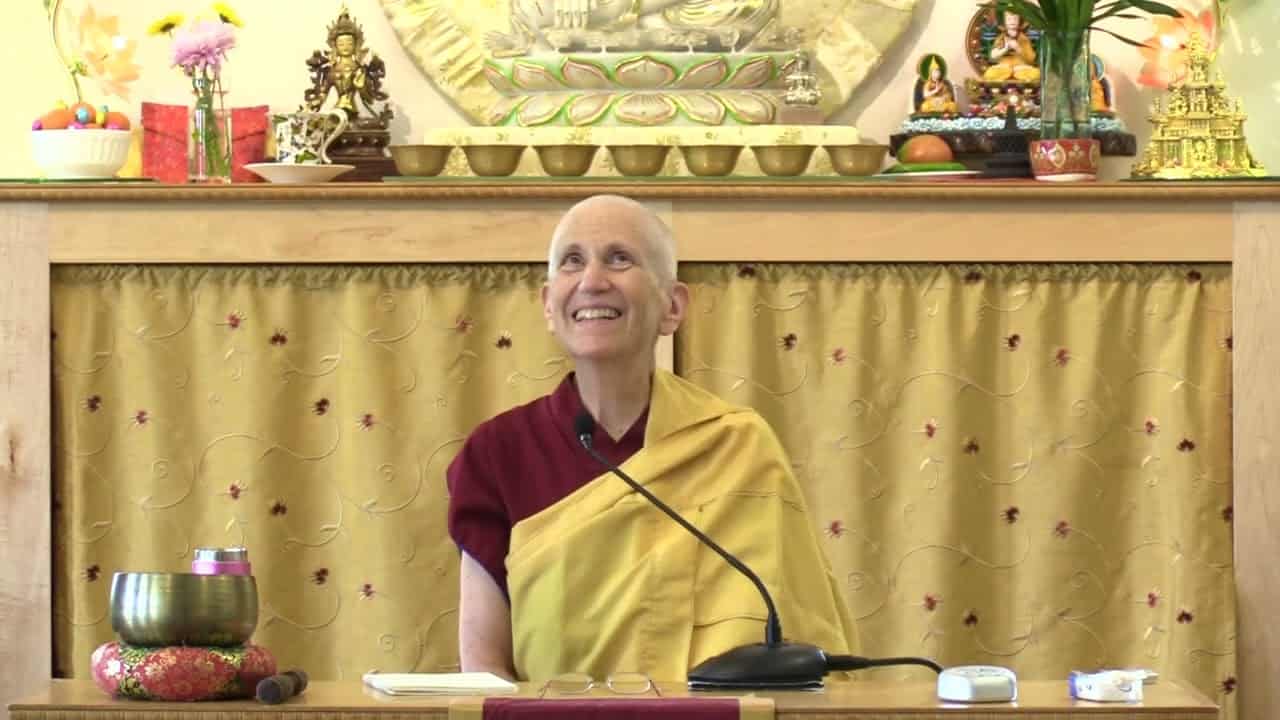The purity of emptiness
114 Samsara, Nirvana, and Buddha Nature
Part of an ongoing series of teachings (retreat and Friday) based on the book Samsara, Nirvana, and Buddha Nature, the third volume in The Library of Wisdom and Compassion series by His Holiness the Dalai Lama and Venerable Thubten Chodron.
- Discussion of low self-esteem and arrogance and humility and self-confidence
- Explanation of samsara and nirvana are equal
- Emptiness of the afflictive mind emptiness of the purified mind
- Overcoming the pitfalls of looking at samsara and nirvana as inherently bad and good
- Problems due to grasping at the appearance of this life
- Explanation of phenomena being manifold and having one taste
- Difference between being in samsara and being in nirvana
Samsara, Nirvana, and Buddha Nature 114: The Purity of Emptiness (download)
Contemplation points
- What does it mean that samsara and nirvana are equal? On what level they are equal and why? On what level they are not equal? What is the danger of misunderstanding phrases like this?
- Consider how grasping at samsara and nirvana as inherently bad and good affects your confidence in freeing yourself from samsara and attaining nirvana. How have you experienced this in your practice? What antidotes are helpful in countering grasping? What antidotes are helpful in countering the lack of confidence in your ability to practice and attain the path?
- Consider how grasping affects your daily life: i.e. every time you get irritated, that’s what’s going on in the mind, etc., Really spend some time with this. Note how incorrectly you actually perceive yourself, others, and the world around you.
- Conclude the contemplation with a feeling that, no matter where you are right now in your practice, it is possible to eliminate all the faults of samsara and actualize all the qualities of nirvana. Rejoice at how fortunate you are to have met the Dharma and spiritual mentors to guide and teach you.
Venerable Thubten Chodron
Venerable Chodron emphasizes the practical application of Buddha’s teachings in our daily lives and is especially skilled at explaining them in ways easily understood and practiced by Westerners. She is well known for her warm, humorous, and lucid teachings. She was ordained as a Buddhist nun in 1977 by Kyabje Ling Rinpoche in Dharamsala, India, and in 1986 she received bhikshuni (full) ordination in Taiwan. Read her full bio.


